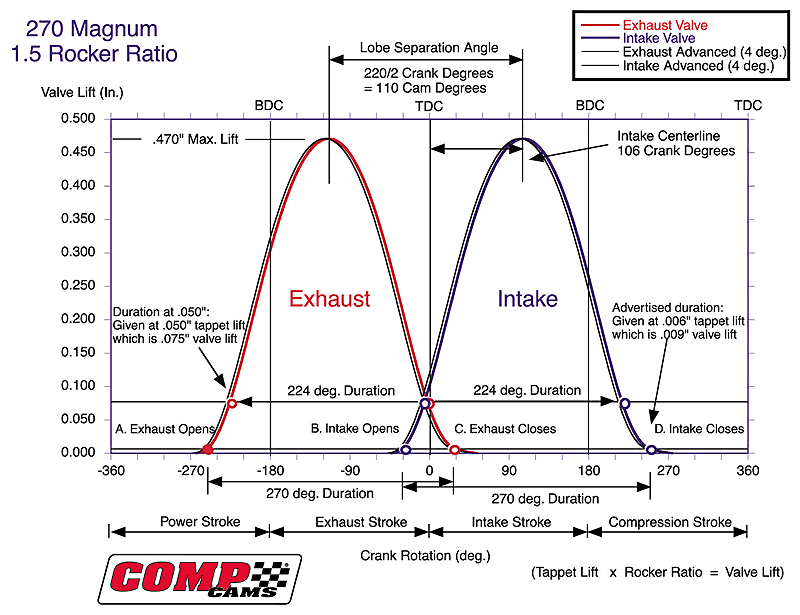Cam timing is far more complex than a 0-100 slider.
One of the main goals of valve timing is to manage the pressure waves generated by rapidly opening and closing valves. Proper valve timing generates a resonance at a particular RPM such that the design RPM is the most efficient. At this RPM, it's not just the piston falling that draws in air/fuel charge but also pressure waves in the intake tract. Likewise, exhaust gases are drawn out of the cylinder by pressure waves in the exhaust system.
SIDE NOTE: Two-strokes generally don't have any moving valves at all and rely upon an expansion chamber to generate resonant pressure waves at a particular RPM that reflect fresh charge that was drawn out the exhaust port and stuff it back into the cylinder. The expansion chamber is the bulbous part of many two-stroke exhaust systems and is effectively an acoustic supercharger. Its position in the exhaust pipe and overall shape (including length and width) determine the RPM at which resonance occurs.
Some of the specs used to identify cam timing are:
- lift (in units of distance), how far the valve opens into the cylinder
- duration (in degrees), the time the valve is open past a certain amount of lift
- centerline (in degrees) of the lift curve with respect to crankshaft rotation
- lobe separation (in degrees) between intake and exhaust centerlines
However, all of these specs merely attempt to represent a graph like this:

TDC (top dead center) and BDC (bottom dead center) refer to the position of the piston in its stroke (and the angle of the crankshaft).
There are also design considerations such as:
- do you want an interference engine, where the valves intrude upon the space swept by the piston? this means you can have more lift but it can also result in catastrophic engine failure if the cam centerline is sufficiently displaced in one direction or the other
- if you want a very fuel efficient engine, you don't want much valve overlap between intake and exhaust (i.e. both open at the same time), otherwise fuel can go in the intake port and straight out the exhaust port
All of this is implemented in Engine Analyzer. You can grab the free demo here:
http://performancetrends.com/Engine-Simulation.htm

